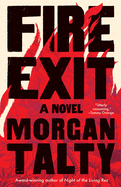
| Publisher: | Tin House | |
| Genre: | General (see also Indigenous Peoples of Turtle Island or Nat, Cultural Heritage, Indigenous, Family Life, General, Literary, Fiction | |
| ISBN: | 9781959030553 | |
| Pub Date: | June 2024 | |
| Price: | $28.95 |
| Starred | Fiction |
by Morgan Talty
Stark and tender, Fire Exit by Morgan Talty (Night of the Living Rez) compassionately addresses tough choices in matters of family and love. In hardscrabble circumstances, surrounded by poverty, alcoholism, and family violence, one man wishes to give his daughter a meaningful gift: the truth.
Charles Lamosway has grown up on the Penobscot reservation in Maine, but doesn't have Native American blood. Although he's very close to his Native stepfather, Frederick, his biological parentage meant he had to move off the reservation when he came of age. Frederick purchased land and helped to build the house where Charles lives now, just across the river. Largely isolated, with few friends, Charles watches from his porch the family on the other side: Mary, Roger, and their daughter, Elizabeth. Charles is Elizabeth's biological father, a secret he has kept at Mary's request. But as he ages, and as his mother Louise's health worsens, he feels increasingly that Elizabeth, now an adult, must know the truth. This urge becomes a fixation, a bodily need. Elizabeth faces medical problems, and he is convinced she needs the truth--including Louise's medical history--to survive. But it's possible that what Charles sees as necessary will have an entirely different outcome from what he intends.
Fire Exit is concerned with bodies, with visceral needs not only for food and shelter but for truth. Talty's tersely poetic, descriptive prose grounds this story in the physical. This first novel grapples with family issues and hard choices about love and responsibility; blood, culture, and belonging. It is an utterly absorbing story, always firmly rooted in the corporeal; tough, honest, but not bitter. --Julia Kastner, librarian and blogger at pagesofjulia
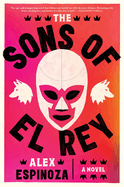
| Publisher: | Simon & Schuster | |
| Genre: | Hispanic & Latino, General, Literary, Fiction, Gay, LGBTQ+ | |
| ISBN: | 9781668032787 | |
| Pub Date: | June 2024 | |
| Price: | $28.99 |
| Starred | Fiction |
by Alex Espinoza
The tender and revelatory family drama The Sons of El Rey by Alex Espinoza (The Five Acts of Diego León) follows three generations of Mexican-American men as their passion for lucha libre sustains them through immigration, loss, and secret heartache.
In the 1960s, Ernesto Vega moves to Mexico City where he becomes the successful luchador El Rey Coyote, immersed in a world of battle and pageantry that embraces a performative version of queerness in a society shrouded by homophobia. His forbidden love for his best friend overshadows his fame and marriage, although he cannot make the relationship public without destroying his reputation. Decades later, in 2020, Ernesto is now an old man dying in the hospital and his son Freddy struggles with the pandemic-mandated closure of the family gym Ernesto founded 40 years ago after emigrating to Los Angeles. Freddy's son Julian is frustrated by his father's macho reluctance to accept his help or emotional support. Julian's financial struggles following grad school lead him into high-end sex work, in which he finds himself playing out a client's reductive fantasies about Mexican-American men.
Espinoza draws readers into the ripple effects of toxic masculinity, racism, and unspoken truths as the Vega men fight in succession to reconcile their inner lives with societal expectations of their identities with varying degrees of success. Espinoza's prose hits with raw emotional power, illuminating the ways in which "[t]he hurt is what shapes us." This saga of fathers and sons, literal and metaphorical masks, and the American dream spans several turbulent decades and highlights the need for each generation to keep moving forward and keep fighting. --Jaclyn Fulwood, blogger at Infinite Reads
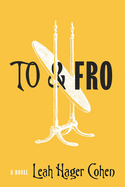
| Publisher: | Bellevue Literary Press | |
| Genre: | Women, Literary, Coming of Age, Fiction, Jewish | |
| ISBN: | 9781954276253 | |
| Pub Date: | May 2024 | |
| Price: | $18.99 |
| Fiction |
by Leah Hager Cohen
Dual young protagonists search for life's meaning in a delightful and unconventionally designed novel that can be read by beginning on either the last or the first page, depending on how readers approach its flip-book format. To & Fro, Leah Hager Cohen's 12th book, follows Ani, who is traveling with a kitten in an unspecified time and place, and Annamae, who is growing up in 21st-century Manhattan.
Cohen (No Book but the World) mirrors Ani's and Annamae's narratives in sometimes obvious and sometimes subtle ways, prompting countless "aha!" moments as parallels surface. Annamae longs to find a perfect friend. "It was as if she'd peeked ahead in a book about herself" and found "a definite clue that such friendship was real, and awaited her." Ani's story is a parable, but her quest is literal; a plucky orphan, she acknowledges that she is "lonesome" and wanders the land in search of a place called Tewanfrough.
Annamae, "serious to a fault," has a more secure childhood; she delights in a list of nautical terminology, "a feast of unknown words and terms," and her conversations with her linguist mother and Harriett, a patient rabbi, burst with wordplay and debates. Meanwhile, Ani also becomes captivated by language; taken in by a community of scholars, she thinks that "if speech were visible" it would be "a great pinwheel of colored streamers... spinning round and round."
To & Fro is a magical celebration of language, stories, and youthful curiosity. Embracing its carefully crafted format of separate, parallel tales will enhance readers' delight as they join Ani and Annamae on their journeys. --Cheryl McKeon, Book House of Stuyvesant Plaza, Albany, N.Y.
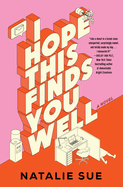
| Publisher: | Morrow | |
| Genre: | Women, Friendship, Humorous, General, Romance, Coming of Age, Workplace, Fiction | |
| ISBN: | 9780063320369 | |
| Pub Date: | May 2024 | |
| Price: | $28 |
| Fiction |
by Natalie Sue
Anyone who's ever worked in an office will appreciate Natalie Sue's hilarious satire of workplace mind games in her debut novel, I Hope This Finds You Well. Sue is a keen anthropologist of the despairs of the office worker and is also adept at rendering tricky family dynamics.
The reluctant star of I Hope This Finds You Well is Jolene, a perceptive, sarcastic Iranian Canadian who lives in Calgary. When one of the snarky messages she appends to e-mails at her boring-but-necessary job is discovered, she's put on a training plan administered by the new HR guy, Cliff, a cute, friendly goof. Jolene's already a miserable loner at work due to misunderstandings and untreated anxiety--getting in trouble makes it excruciatingly worse.
Unfortunately, Jolene has no one to confide in. Her life outside the office is just as lonely, a fact she tries to hide from her parents, especially her delightfully pushy Iranian immigrant mother who tries to play matchmaker. Jolene's not interested in love; she's too busy dealing with shame and trauma from a life-changing high school incident that continues to haunt her. However, Jolene's situation takes a turn when her computer suddenly grants her access to all company e-mails and instant messages. Being privy to all the gossip and posturing among her coworkers spurs her into action, and she decides to best her office rival, befriend Cliff, and snag an open promotion.
Despite her novel's comedic billing, Sue avoids clichés and stock characters, instead building layered portrayals of even the villains. Prepare to feel excruciating secondhand embarrassment but also hope, grief, joy, and so much more. --Nina Semczuk, writer, editor, and illustrator
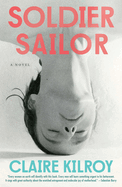
| Publisher: | Scribner | |
| Genre: | Psychological, Family Life, General, Literary, Fiction | |
| ISBN: | 9781668051801 | |
| Pub Date: | June 2024 | |
| Price: | $26.99 |
| Fiction |
by Claire Kilroy
Claire Kilroy (The Devil I Know) explores the highest highs and lowest lows of motherhood in Soldier Sailor, a searing portrait of the early years of parenting written as a kind of confessional from an unnamed mother to her son.
"I hadn't had an unbroken night's sleep since you'd exploded onto the scene--I love you, but Jesus wept," she says. Within the sleeplessness, she finds a love for her child she never thought possible, but also a deep-seated rage: at her husband and the patriarchy, at the failure of community to care for young mothers, at the impossibility of motherhood, the tedium and the joy of it all as she slides into something akin to insanity. Kilroy's incredible novel candidly explores the tiresome and infuriating reality of mothering a small child. The mother wonders how and when she became this spiteful version of herself. And yet Soldier Sailor itself never comes off as bitter, as Kilroy beautifully brings the novel back time and again to the desperate love this mother has for her exasperating, exhausting, perfect child. "Loving you was the easy part. Loving you was the only easy part."
In finding that balance, Kilroy succeeds in offering readers a glimpse into motherhood that feels as primal as it is poetic, a brilliant reflection of how impossibly enormous all emotions become in the transition into motherhood. Raw and honest, Soldier Sailor will leave readers--and especially those who are mothers themselves--white-knuckled at the end of an emotional roller-coaster of anguish and joy alike that perfectly encapsulates the extremes of becoming a parent. --Kerry McHugh
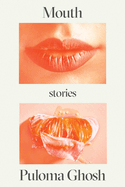
| Publisher: | Astra House | |
| Genre: | Short Stories (single author), Fairy Tales, Folk Tales, Legends & Mythology, General, Fiction, Science Fiction | |
| ISBN: | 9781662602474 | |
| Pub Date: | June 2024 | |
| Price: | $26 |
| Fiction |
by Puloma Ghosh
Mouth, Puloma Ghosh's debut, is a collection of 11 sometimes surreal, sometimes horrifying, always startling short stories. Grappling with themes of female bodily autonomy, the connection between sexuality and death, and the haunting influence of grief, these stories will unsettle and fascinate in equal measure.
In "Desiccation," a teen girl develops a sexual fantasy about the only other Indian girl at her local ice rink, Pritha, whom she thinks is a vampire. Linked notions of grief and sexuality persist in "In the Winter," a flash piece about a woman's raw sexual encounters in college. Meanwhile, "Nip" is told from the perspective of a woman's favorite perfume, already aching from the loss of her lover's skin, and "Natalya" chillingly unspools the truth behind one woman's death through the perspective of her ex-lover's systematic autopsy of her corpse.
In these stories, Ghosh's visceral descriptions make the abstractions of desire and rage elusive, slippery as scent or blood between fingers. Like K-Ming Chang's carnal prose, Ghosh's delights in even the grotesque sides of sex and rebirth. But while her stories often include substantial violence, their climaxes focus more on transcendent, existential questions. The uncanny sense of some parallel, negative space, waiting to entrap someone or swallow them whole arises in "Lemon Boy." A girl who already feels alienated from her post-college life meets an enigmatic boy who awakens her awareness to black holes that follow him "like some kind of all-invasive flora" and constantly threaten to consume him. Like the story the Lemon Boy tells, Ghosh's stories awaken readers to the gaping presence of their own insatiable hungers. --Alice Martin, freelance writer and editor
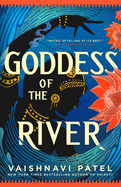
| Publisher: | Redhook | |
| Genre: | Magical Realism, Ancient, Fairy Tales, Folk Tales, Legends & Mythology, Fantasy, Literary, Fiction, Historical | |
| ISBN: | 9780759557345 | |
| Pub Date: | May 2024 | |
| Price: | $32 |
| Fiction |
by Vaishnavi Patel
Vaishnavi Patel (Kaikeyi) tells the story of the Mahabharata through the dual perspectives of the goddess Ganga and her son Bhishma in Goddess of the River. The goddess Ganga--who appears only briefly at the beginning of the source text--remains an important character throughout this moving novel, which touches on themes of motherhood, love, duty, justice, pain, grief, guilt, and causality.
The narrative begins with Ganga's arrival on Earth in response to humanity's prayers, followed by her binding when other gods fear her "unbridled spirit"; her gradual appreciation of Earth's natural beauty and the godlings who care for it; and her horror at humanity's destruction of Earth. After a vengeful human curses Ganga and her beloved godlings to mortal form as mother and children, Ganga releases seven godlings by drowning them moments after birth, but her husband, the raja of Hastinapur, prevents her from killing her eighth godling child, who becomes Bhishma. Bhishma misunderstands Ganga's instructions, which were intended to save him from committing human crimes whose weight he would bear when returned to godling form, and he honors his oaths even when doing so negates the righteous choice. As a result, disputes about the rightful heir fester over two generations, and Hastinapur hurtles toward a "war to end all wars" between cousins. Humans grapple with the meanings of dharma and righteousness, and Ganga's stance on humanity softens as she begins to understand the complexity of the human condition.
Patel's lyrical style, especially in Ganga's voice, remains even through blood-soaked battle scenes, keeping the focus on ideas about the long sweep of history, both of humanity and the world. --Dainy Bernstein, freelance reviewer
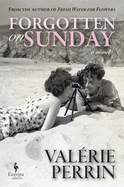
| Publisher: | Europa Editions | |
| Genre: | Women, Friendship, World Literature, France - 21st Century, Small Town & Rural, Fiction | |
| ISBN: | 9798889660187 | |
| Pub Date: | June 2024 | |
| Price: | $28 |
| Fiction |
by Valérie Perrin, trans. by Hildegarde Serle
An unlikely friendship is forged between two women born generations apart in Forgotten on Sunday, a profound, emotionally complex novel written by Valérie Perrin and translated from the French by Hildegard Serle.
For years, 21-year-old Justine Neige has lived in Milly, a small French village, while happily working as a nursing assistant at the Hydrangeas, the local retirement home. There, Justine is most intrigued by Hélène, an enigmatic, 96-year-old nicknamed "The Beach Lady." Drawn to Hélène and her stories, Justine willingly collects and records her remembrances in a notebook at the behest of Hélène's grandson. In doing so, Justine uncovers details of Hélène's long, fascinating life that include romantic passions; a bistro job where she catered to the poet Baudelaire; and the harrowing atrocities of World War II. These incredibly moving stories of love, loss, and forgiveness awaken Justine's desires: "I feel nostalgic, nostalgic for what I've not yet lived." These feelings deepen when anonymous, mysterious phone calls are made from the Hydrangeas that falsely notify relatives that their loved ones have died. The contacts have either forgotten or refuse to keep in touch with the geriatrics; the calls finally force folks to visit. As a police investigation ensues, Justine probes the history of her own family--and questions are suddenly raised regarding the long-ago tragic car accident that claimed her parents' lives.
Perrin (Fresh Water for Flowers) skillfully juggles the storylines of Justine and Hélène, heightening the drama of each with unexpected revelations. Delicate plot points--infused with elements of historical fiction juxtaposed against contemporary themes--will keep readers charmed and deeply engrossed. --Kathleen Gerard, blogger at Reading Between the Lines
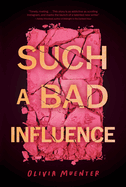
| Publisher: | Quirk Books | |
| Genre: | Psychological, Mystery & Detective, Amateur Sleuth, Suspense, Thrillers, Fiction | |
| ISBN: | 9781683694014 | |
| Pub Date: | June 2024 | |
| Price: | $24.99 |
| Mystery & Thriller |
by Olivia Muenter
A wicked debut with a twist to make readers' heads spin, Olivia Muenter's Such a Bad Influence strikes at the unsteady scaffolding of the influencer economy, where personalities--and entire childhoods--are optimized for the algorithmic gold rush.
In the book's opening pages, Evelyn "Evie" Davis, one of the world's most-followed social media influencers who has been a walking, talking brand since she was a kid, launches an Instagram Live from the front seat of her car. That's nothing out of the ordinary for such an in-demand creator, but when the broadcast cuts out suddenly and Evie vanishes, it's her much older (and much less online) sister, Hazel, who suspects foul play. Hazel is convinced that she--and only she--really understands her little sister, who's been a pawn in their mother's financial machinations for years. And so begins Hazel's desperate bid to uncover what has really become of Evie, with or without police cooperation. But doing so will require Hazel to dig into the history of @evelyn, and that story is far more complicated than Hazel ever wanted to imagine. Using snippets of text threads, Reddit forums, newsletter archives, and podcast transcripts to accompany Hazel's first-person narrative, Muenter builds an of-the-moment read that avoids becoming on the nose. With Such a Bad Influence, the writer and Bad on Paper podcast cohost makes a compelling case for why we can never really know someone--even, and perhaps especially, those whom we most yearn to know. --Lauren Puckett-Pope

| Publisher: | Atria | |
| Genre: | Psychological, Women, Suspense, Thrillers, Fiction | |
| ISBN: | 9781668013045 | |
| Pub Date: | May 2024 | |
| Price: | $28.99 |
| Mystery & Thriller |
by Jaclyn Goldis
In The Main Character, a clever but at times uneven homage to Agatha Christie, Jaclyn Goldis explores the unusual strategy her bestselling mystery author, Ginevra Ex, devises to shape the protagonists of her own novels.
Instead of using only her imagination, Ginevra finds ordinary people from whom she can build a character and asks them increasingly personal questions, followed by an investigation by a private detective. In exchange for their life's story and the invasion of their privacy, the subjects receive $100,000, plus infamy in one of Ginevra's novels. Former news anchor Rory Aronov is "Ginevra's latest, and finest, main character," and the author gives her a bonus: a luxury suite on the Venice Simplon-Orient-Express for a journey across Italy. For Rory, the train conjures the "most glamorous Agatha Christie novel. A place inexplicably of both fun and murder." But her excitement becomes puzzlement when the passengers include her brother, her ex-fiancé, her best friend, and a former lover who is also Ginevra's attorney. Each of them receives a copy of Ginevra's unpublished manuscript, which exposes their secrets. The manuscripts' disappearance is only one mystery the train holds.
Ginevra's devious plotting manipulates Rory and company as if they were her creations. But a tangential story line delving into Ginevra's past takes the plot off the rails until Goldis brings her clever idea back on track. The Main Character gains its strength by concentrating on the characters' interactions as this Christie tribute puts a new spin on the locked-room mystery. --Oline H. Cogdill, freelance reviewer

| Publisher: | Bloomsbury | |
| Genre: | Psychological, Mystery & Detective, Crime, General, Literary, Suspense, Thrillers, Fiction | |
| ISBN: | 9781639732890 | |
| Pub Date: | June 2024 | |
| Price: | $28.99 |
| Mystery & Thriller |
by Joanna Pearson
Joanna Pearson's intricate debut novel, Bright and Tender Dark, nimbly ties in true-crime tropes as it traces the ripple effects of a college student's murder in 2000.
Karlie Richards, a popular 19-year-old University of North Carolina freshman, was a leader in the campus evangelical group. When she was found strangled to death in her apartment, Toby Braithwaite, an intellectually disabled man who worked at a local diner and had a crush on Karlie, was arrested. He's jailed for the crime, though he's widely believed to be innocent.
The framing story, set two decades later, in 2019, has Karlie's freshman roommate, Joy Brunner, finding an unopened letter from Karlie addressed to her in an old book. The amateur investigation spurred by the letter turns into a writing project that offers Joy fresh purpose, but Joy's obsession endangers her mental health.
Multiple, often unexpected third-person limited perspectives contribute vital clues, although they threaten to overcomplicate the narrative. Pearson contrasts 1999 and 2019 via documents that include newspaper articles and Reddit threads, portraying the dangers of the social media era through a vicious online debate and an incriminating viral video.
Religion takes on major significance here. The title's oxymoron juxtaposes light and dark, good versus evil, but the situation is subtler. Ambivalence reigns: Joy is a missionary's daughter whose father's advancing illness eroded her faith; Karlie questioned everything; another character escapes a cult. It all makes for a convincing--if bleak--post-religious landscape, but Bright and Tender Dark's many facets mesh satisfyingly by the end. This is a perfect choice for true-crime readers of I Have Some Questions for You and My Dark Vanessa. --Rebecca Foster, freelance reviewer, proofreader and blogger at Bookish Beck
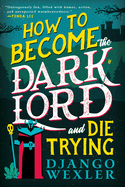
| Publisher: | Orbit | |
| Genre: | Epic, Humorous, Fantasy, Fiction | |
| ISBN: | 9780316392204 | |
| Pub Date: | May 2024 | |
| Price: | $19.99 |
| Starred | Science Fiction & Fantasy |
by Django Wexler
In How to Become the Dark Lord and Die Trying, the first entry in a planned series, Django Wexler (Ashes of the Sun) introduces a sarcastic, punchy heroine. Davi is done with dying and starting over in a world that has kept her in a time loop for a thousand years, ever since she woke up from her life on Earth and was greeted by a wizard who told her she's the destined savior of the Kingdom. In her 238th life, she decides to become the Dark Lord herself. She starts by gathering a horde of minions from among the wilders, non-human beings who serve the Dark Lord and have been her enemies for the past thousand years.
Davi's first-person narration is electric, filled with obscenities and hilarities, as when she describes her method of killing the wizard as having "enmushified his head." She addresses readers within the narrative and in footnotes, providing context and making groan-worthy jokes, mostly sexual. But the novel is not all killing, sex, and jokes. As her quest progresses, Davi ponders the ethics of others dying for her, even if everything (including their lives) will just reset when she dies again. She's surprised by the loyalty some wilders develop for her but also begins to form feelings for them--one in particular. She acknowledges that her situation sounds like a video game or RPG, but she hasn't figured out the rules of this world. In choosing villainy over heroism, Davi may be getting closer to answers, but she might not like them.
Davi's questionable ethics, active libido, comfortable bisexuality, and leadership skills combine for a fresh and exciting take on the fantasy adventure. --Dainy Bernstein, freelance reviewer
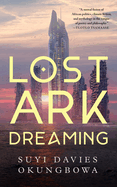
| Publisher: | Tordotcom | |
| Genre: | Apocalyptic & Post-Apocalyptic, Fiction, Science Fiction | |
| ISBN: | 9781250890757 | |
| Pub Date: | May 2024 | |
| Price: | $19.99 |
| Science Fiction & Fantasy |
by Suyi Davies Okungbowa
Lost Ark Dreaming is an immersive speculative novella by Nigerian-born author Suyi Davies Okungbowa (Son of the Storm). Its intriguing characters navigate a brutal class system, organized into levels of a partially submerged megatower in Lagos. The novella is detailed and complex enough to be worth reading just for the world itself.
But Lost Ark Dreaming has much more to recommend it beyond fantastic world-building. Of its three main characters, Yekini particularly shines as a lovable grouch who just wants to care for her grandmother and keep her nose clean at work. But she gets into exactly the kind of trouble she's been trying so hard to avoid when she is assigned to fix a mysterious leak in the submerged levels of the tower.
Okungbowa blends a post-climate collapse, drowned-world setting with fantastical tropes. He intersperses epistolary elements (a combination of documentation, poetry, and folklore) throughout and ultimately engages with a deep and powerful thread of real history. His writing is thoughtful and peppered with gorgeous lines, such as "the weight of grief is not a weight for bodies." Water is a poignant presence and metaphor; that the poorest people in this society are literally submerged below the waterline is an especially resonant example.
For fans of genre benders, dystopia, and stories of great humanity, Lost Ark Dreaming is a feast of meaning. The novella may be short, but Okungbowa achieves a feat of compression. Readers will be drawn into a fast-paced story set in an intensely imagined world of science, spirits, and poetry. --Carol Caley, writer

| Publisher: | St. Martin's Griffin | |
| Genre: | Romantic Comedy, Romance, Fiction | |
| ISBN: | 9781250329424 | |
| Pub Date: | May 2024 | |
| Price: | $18 |
| Romance |
by Tarah DeWitt
In Tarah DeWitt's Savor It, a disgraced chef and a schoolteacher spend a summer teaching each other to enjoy the little things. With humor, simmering tension and steady character development, this small-town romance is a feast for the senses and a balm for world-weary souls.
Fisher Lange was once a culinary rockstar with three Michelin stars. But his passion waned and then his sister died in a car crash, leading to a public blowup and his firing. His former boss gives him one last chance: go to Spunes, Ore., and get her new restaurant ready for the incoming head chef. After having dodged his guardian responsibilities for three years, Fisher takes his teenage niece to Spunes for a fresh start. The small town proves exactly what they both need--a chance to breathe and connect with each other.
Schoolteacher and amateur flower farmer Sage Byrd is a small-town girl. She loves the supportive community of Spunes and doesn't dream of leaving. And she refuses to be labeled as unambitious or somehow lesser because she's happy this way.
When Fisher moves in next door for the summer, the two fall into a sweet, sexy, short-term romance. Growing closer is bittersweet. How can they follow their hearts and stay true to themselves when they know Fisher will leave soon?
As Sage and Fisher linger over the feel of water on their skin, the vibrant beauty of a late-summer dahlia, and the decadence of a simple, perfect scone, readers will be inspired to slow down and savor it. --Suzanne Krohn, librarian and freelance reviewer
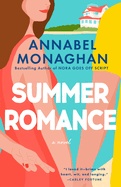
| Publisher: | Putnam | |
| Genre: | Women, Romantic Comedy, Family Life, Romance, Contemporary, General, Fiction | |
| ISBN: | 9780593714089 | |
| Pub Date: | June 2024 | |
| Price: | $19 |
| Romance |
by Annabel Monaghan
Annabel Monaghan's warm-hearted third novel for adults, Summer Romance, explores one woman's quest to reclaim her life after cataclysmic grief, and the risks she takes in opening her heart again.
Professional organizer Ali Morris has operated on autopilot, slopping around in sweats, since her mom died and her husband, Pete, moved out. But when Pete finally tells her he wants a divorce, something in Ali wakes up. Digging through her wardrobe for pants with actual hardware, she heads to the dog park and immediately meets Ethan, a handsome lawyer. But their seemingly no-strings-attached summer romance will have far-reaching consequences, both for Ali's love life and her dormant sense of self.
Monaghan (Nora Goes Off Script; Same Time Next Summer) creates a breezy narrative that combines witty asides (including Ali's one-sided conversations with her mother) with the nuts-and-bolts struggles of single parenting, including a frantic search for a lost soccer jersey and deep existential loneliness. Ali can organize other people's closets or spice cabinets, but facing her own insecurities and taking charge of her future proves harder. The contrast between Ali's decision to build an adult life in the town where she grew up and Ethan's choice to establish himself elsewhere helps ramp up the tension of their relationship. As Ali begins to fully inhabit her days (and her non-sweatpants wardrobe) again, she must decide if it's worth extending that summer fling into an uncertain--but attractive--future.
Bittersweet and often wryly funny, Summer Romance is an appealing mix of starry-eyed romantic moments, quirky local characters, and reflections on moving forward after loss. --Katie Noah Gibson, blogger at Cakes, Tea and Dreams
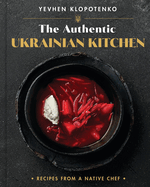
| Publisher: | Voracious | |
| Genre: | Regional & Cultural, Cooking, General, European, Entertaining, Essays & Narratives | |
| ISBN: | 9780316559393 | |
| Pub Date: | May 2024 | |
| Price: | $40 |
| Starred | Food & Wine |
by Yevhen Klopotenko
Activism can start in the kitchen--or at least that's what it feels like when reading The Authentic Ukrainian Kitchen: Recipes from a Native Chef, a cookbook by one of Ukraine's most popular chefs. Yevhen Klopotenko, who counts restaurateur and school-lunch reformer among his many pursuits, repudiates a bland, Soviet-imposed food culture and heralds Ukraine's ethnic dishes as worthy of kitchens around the world. "After all," he writes, "if you want to learn about a culture, what better way than to try its dishes?" The chef doesn't shy away from mentioning the Russia-Ukraine war. In fact, the book's very first recipe includes modifications needed in 2022 when Ukrainian grocery stores ran out of yeast.
The robust cookbook proudly dives into the history of staples such as rye flour and cheeses. However, Klopotenko informs readers in his casual, friendly style when the historical record is sparse, such as how buckwheat first arrived in Ukraine. The book sorts its recipes into eight sections; each recipe generally fills an entire page, with accompanying photographs claiming full pages of their own. Fans of Olia Hercules's Mamushka will recognize a similar aesthetic in this book's food styling and plating. But while Hercules leans toward memoir in her recipe introductions, Klopotenko relies on research and his travels to provide context.
While the recipes are mostly current and rediscovered Ukrainian classics, Klopotenko adds his own twists here and there, such as adding fennel seeds to black currant liqueur, or adding honey and smoked paprika to uzvar, another quintessential drink. --Nina Semczuk, writer, editor, and illustrator
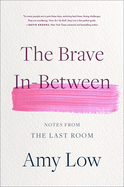
| Publisher: | Hachette | |
| Genre: | Biography & Autobiography, Family & Relationships, Self-Help, Personal Growth, Happiness, Death, Grief, Bereavement, Memoirs | |
| ISBN: | 9780306831799 | |
| Pub Date: | June 2024 | |
| Price: | $28 |
| Biography & Memoir |
by Amy Low
Amy Low's thoughtful memoir, The Brave In-Between, details her attempts to live with courage and compassion after receiving a stage IV colon cancer diagnosis, on top of her divorce. Low invites readers into "the last room" of life, sharing her struggles and triumphs (and some deceptively "normal" days) along her cancer journey.
She begins her narrative with "an awful ending": the dissolution of her marriage to Don, the father of her two children. In 2019, several years into single parenthood, with Don living several hours away, Low went to see her doctor about some symptoms she couldn't shake. After a series of increasingly worrying tests, Low's medical team found a sizable mass on her liver--a diagnosis that sent her down a path she could never have imagined.
As she details her chemo treatment; her cycle of surgeries and recoveries; and her emotional swings from acceptance to anger to overwhelming grief, Low frames her experience around St. Paul's exhortation in Philippians, chapter 4, verse 8: "Whatever is true, whatever is noble, whatever is right, whatever is pure, whatever is lovely, whatever is admirable--if anything is excellent or praiseworthy, think on these things." Low sees this as "the map for the most bewildering corners" of her last room, as she navigates the "constant tension between the art of living fully and the discipline of waiting well."
Her memoir emphasizes the beauty, wisdom, and even joy she found along the way. With humor, grace, and plenty of grit, Low lives as fully as she can in the last room, knowing her time there is limited--but remaining open to what the room can teach her. --Katie Noah Gibson
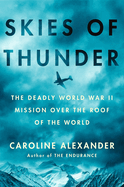
| Publisher: | Viking | |
| Genre: | Southeast Asia, Aviation & Space, Asia, Wars & Conflicts, History, World War II - General, Military | |
| ISBN: | 9781984879233 | |
| Pub Date: | May 2024 | |
| Price: | $32 |
| History |
by Caroline Alexander
The often overlooked and extremely chaotic China-Burma-India (CBI) theater of operations in World War II receives long-overdue treatment in Skies of Thunder by bestselling historian Caroline Alexander (The Endurance). When Japan's armies burst into Burma (now Myanmar) in 1942, they seized the only ground route from India to China. U.S. President Franklin D. Roosevelt, eager "to keep China in the war," ordered a ferry operation to fly thousands of tons of supplies and weapons over the Himalayas to China's nationalist leader (and demanding ally), Chiang Kai-shek. The aerial route from India to China confronted the most experienced pilots with two critical threats: the dangerous terrain known as "the Hump" and often violent weather.
Alexander relies on memoirs, pilot records, and crash logs to recount a bevy of blood-chilling horror stories, as well as the psychological deterioration of those who "flew in fear." This unique condition even had its own diagnosis among airmen: "Humpitis." Alexander also goes beyond the pilots' stories to set the Hump operation against the broader American political and military goals of the CBI theater, including an elegantly encapsulated account of the second Burma campaign of 1944. She cuts through the confusing command structure that overlapped between American, British, and Chinese forces and draws vivid portraits of its (often) prickly personalities, offering an especially insouciant analysis of American General Joseph "Vinegar Joe" Stilwell, whose "pathological loathing of the British" made military success nearly impossible. In Skies of Thunder, Alexander wrangles multiple strands into a seamless and illuminating piece of modern war history. --Peggy Kurkowski, book reviewer and copywriter in Denver
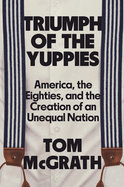
| Publisher: | Grand Central | |
| Genre: | Demography, North American, Sociology, Political Ideologies, General, History, Social Science, Political Science | |
| ISBN: | 9781538725993 | |
| Pub Date: | June 2024 | |
| Price: | $32 |
| Political Science |
by Tom McGrath
For anyone old enough to remember the 1980s, the term "young urban professional" and its shorthand "Yuppie" may conjure up a prototypical BMW-driving, suspenders-wearing investment banker who personified the notion of a certain kind of frenetic careerist striving. But as former Philadelphia magazine editor-in-chief Tom McGrath explains in his lively popular history Triumph of the Yuppies, the short-lived flourishing of this archetype signaled more than a passing assortment of fads.
In the 1970s, the postwar consensus built around rising living standards and the projection of international power by the United States began to crumble under the weight of long lines at the gas pump, stagflation, and foreign debacles like the 1979 Iran hostage crisis that doomed Jimmy Carter's presidency. McGrath contends the country was launched irrevocably on the path of increasing economic stratification. Yuppies--highly educated and pouring into knowledge-driven professions like finance and law--were determined to be among the "haves" in what they saw as a zero-sum game.
McGrath neatly integrates his comprehensive research with brief, magazine-style profiles of well-known characters of the era including 1960s antiwar activist turned unlikely 1980s entrepreneurial capitalist Jerry Rubin. He shares concise evocations of shared cultural touchstones like the TV series Dallas, the Jane Fonda-inspired workout craze, and the rise of MTV. Triumph of the Yuppies concludes with the stock market crash of October 19, 1987. That event may have marked the demise of the Yuppies as a social phenomenon, but in a short span of years animated by a spirit that glorified unbridled acquisitiveness, McGrath writes, "the country had created a new economic and social order that couldn't easily be undone." --Harvey Freedenberg, freelance reviewer
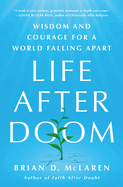
| Publisher: | St. Martin's Essentials | |
| Genre: | Self-Help, Christian Living, Inspiration & Personal Growth, Spiritual, Spiritual Growth, Body, Mind & Spirit, Religion | |
| ISBN: | 9781250893277 | |
| Pub Date: | May 2024 | |
| Price: | $28 |
| Psychology & Self-Help |
by Brian D. McLaren
Former pastor and prolific author Brian D. McLaren's Life After Doom: Wisdom and Courage for a World Falling Apart, is an openhearted response to climate emergency. McLaren applies religious principles to real circumstances as he predicts hard times ahead and signposts a middle way between hope and despair.
McLaren (Faith After Doubt) doesn't sugarcoat: the human situation is critical, a result of ecological overshoot, unjust political systems, and the enshrinement of capitalism. Societal collapse appears inevitable; the question is when. McLaren begins by comparing the possibilities of four scenarios typically represented in dystopian fiction. "Collapse Avoidance" seems increasingly unlikely, which leaves "Collapse/Rebirth," "Collapse/Survival," or "Collapse/Extinction." Though McLaren often fears the worst, he maintains an attitude of defiance.
The book's four-part structure models a spiritual journey: "Letting Go" involves waking up to reality, guarding one's mental health, reckoning with eco-grief through poetry, and rejecting harmful ideologies. "Letting Be" seeks insight from Indigenous perspectives--and McLaren argues the Bible should be counted among "sacred indigenous literary artifacts." "Letting Come" explores parallels from historical civilizations and offers strategies for resilience. "Setting Free" ponders actions that show respect for future generations. The author insists that "ugliness is everywhere" but "beauty abounds."
McLaren illustrates his proposals through his own trajectory--away from prescriptive theology and toward an understanding of climate change, a love for nature, and a passion for social justice. Life After Doom is a conversational and interactive work combining everyday metaphors, family stories, scriptural exegesis, and mystical moments. McLaren quotes frequently from figures such as Audre Lorde and Richard Rohr. Comprehensive, practical, and philosophical, this is a necessary corrective to false optimism or unconstructive catastrophizing. --Rebecca Foster, freelance reviewer, proofreader and blogger at Bookish Beck
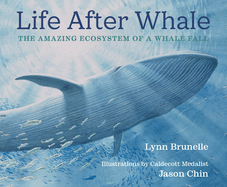
| Publisher: | Neal Porter Books | |
| Genre: | General, Juvenile Fiction | |
| ISBN: | 9780823452286 | |
| Pub Date: | June 2024 | |
| Price: | $18.99 |
| Starred | Children's & Young Adult |
by Lynn Brunelle, illust. by Jason Chin
Bill Nye the Science Guy writer Lynn Brunelle leads readers through the marine circle of life in a stunning picture book about a whale fall, employing a narrative voice that eases young readers through the extraordinary life a death creates. Brunelle's work, accompanied by the astonishingly realistic watercolor and gouache artwork of Caldecott Medalist Jason Chin (Watercress), is an exquisite ode to the largest documented animal on Earth.
Brunelle expertly sets the scene for her audience, describing the ocean and its thriving life forms. "Glowing shrimp, jellyfish, and other creatures twinkle nearby in the dark.... In the distance, a barreleye fish floats by with two glowing green globe eyes set in a see-through head." While readers could easily imagine this miraculous bioluminescent scene from her words, Chin's brilliant colors on an inky-dark canvas illuminate the reader's path to discovery. Brunelle packs her narrative with fascinating details about the animals, such as sharks, octopuses, lobsters, sea cucumbers, and snails, that benefit from a whale carcass. "Even though together these scavengers can eat 80 pounds of whale blubber and muscle every day, it still takes years to finish off the soft flesh of a whale." Chin fills the pages with illustrations that show the fine details of these creatures who live in the expansive, constantly moving ocean.
Life after Whale offers young readers an incredible glimpse at the wonder of the ocean through the life cycle of one of its most astounding inhabitants. And for those who crave more, additional resources fill the book's back matter. Don't wait, dive right in! --Jen Forbus, freelancer
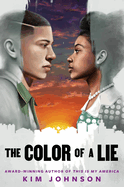
| Publisher: | Random House Books for Young Readers | |
| Genre: | Social Themes, Young Adult Fiction, African American & Black, Prejudice & Racism, Diversity & Multicultural | |
| ISBN: | 9780593118801 | |
| Pub Date: | June 2024 | |
| Price: | $19.99 |
| Starred | Children's & Young Adult |
by Kim Johnson
Author of such "ripped-from-the-headlines" titles as This Is My America and Invisible Son Kim Johnson enters the world of historical fiction with The Color of a Lie, about a teenager in 1955 who uncovers violent, racist secrets in his Pennsylvania town.
High school junior Calvin Greene has begrudgingly moved to a small suburban town in Levittown, Pa., with his parents. Although Calvin and his family are Black, they can "pass" for white and have settled in a "whites only" community. Calvin's father wants them to fully assimilate but Calvin finds "playing white" exhausting. The only good thing about the move is that he now lives closer to his brother, Robert, who runs a small Black boarding school. Calvin often sneaks away to visit Robert and his students, and to affirm his own connection to the Black community. There Calvin meets Lily Baker, a student who is part of a group integrating an all-white high school. Calvin's growing romance with Lily and his secret identity quickly place him directly in the center of broiling racial tensions as he discovers how his town maintains their all-white community.
Johnson delivers a stellar and arresting YA thriller inspired by real-life events during the civil rights movement. The author tells the story through Calvin's perceptive, candid, first-person point of view and covers difficult and complex topics while delving into the complicated, tricky reasons a person might choose to "pass," while elaborating on the experiences of those who couldn't or wouldn't. A historical novel that is captivating, edifying, and gracefully expressed. --Natasha Harris, freelance reviewer
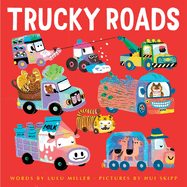
| Publisher: | Paula Wiseman Books | |
| Genre: | Transportation, Cars & Trucks, Imagination & Play, Juvenile Fiction | |
| ISBN: | 9781665919173 | |
| Pub Date: | June 2024 | |
| Price: | $18.99 |
| Children's & Young Adult |
by Lulu Miller, illust. by Hui Skipp
The eponymous main character invites readers to tour a captivatingly silly array of real and fantasy trucks in the groovy, imagination-affirming picture book Trucky Roads, written by Terrestrials podcast host Lulu Miller (Why Fish Don't Exist) and illustrated by Hui Skipp (Maps for Penguins).
"If you can dream it, it could be," says Trucky Roads, a brown-skinned man with a curly, full beard who wears a pink cap, sunglasses, and a bohemian outfit. While "some people look at the road and just see TRUCKS," if you ask Trucky Roads, "you can see there are all KINDS of trucks." Which KINDS of vehicles? Well, there are industrious garbage trucks, helpful dump trucks, and hurrying fire trucks. There are also Earth Trucks, Wind Trucks, Water Trucks and a tow truck towing a Toe Truck, which sports a full foot of pink toes in place of a grill. "And that's just while awake," Trucky says as he leads readers into a cosmic dreamscape where a Cloud Roller makes puffy white clouds paper flat. The book ends with an encouragement to the reader to "add some wheels" and imagine their own fanciful machines.
Miller rolls through the lorry lineup in an upbeat, pun-forward rhythm punctuated by philosophical moments. Skipp's fully saturated, imaginative digital illustrations conjure a host of cartoonish vehicular characters that are exuberant, enchanting, and even (in some cases) edible. Young truck fanatics may find their minds expanded here while the non-vehicularly inclined may see the big machines in a friendlier light. "Truck is in the eye of the beholder," after all. --Jaclyn Fulwood, youth services manager, Allen County Public Library
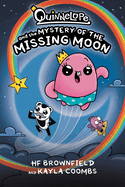
| Publisher: | Oni Press | |
| Genre: | Humorous Stories, Humorous, Mystery & Detective, Mysteries & Detective Stories, Juvenile Fiction, Comics & Graphic Novels | |
| ISBN: | 9781637154397 | |
| Pub Date: | June 2024 | |
| Price: | $14.99 |
| Children's & Young Adult |
by HF Brownfield, Kayla Coombs
For the second book in their Quinnelope series, Quinnelope and the Mystery of the Missing Moon, HF Brownfield and Kayla Coombs (Quinnelope and the Cookie King Catastrophe) send their pink blob hero and her pals into space in search of their planet's missing moon. They meet a plethora of zany characters and encounter the inconceivable along the way, making their celestial adventure a foray into silliness and fun.
When Quinnelope discovers that Planet Quearth's moon has left its orbit, she alerts her confidants and they all set off in a deluxe space RV. They must find their moon--if they don't, what will happen to "ghost stories and camp fires and beauty sleep?" The voyagers make their way through town and then launch onto space highway Route 77. The team of cosmic sleuths encounter a meteor family, go bowling with farting spikey blokes, and ask for directions at the Glitterglorb. Meanwhile, Star produces an intergalactic radio show that chronicles their extraordinary encounters in the wilds of space.
Brownfield and Coombs's protagonists are whacky and endearing. Star, "the only star in the universe who shoots rainbows out of their gluteus maximus," Bub, a level-headed, "responsible panda butler," and Pish, a talking purple goldfish, complement Quinnelope's larger-than-life personality. Brownfield and Coombs use panels and full-page bleeds to keep the visual story dynamic and the colorful comic-style illustrations are bold, striking, and filled with exaggerated cuteness. No matter what planet the audience is on, they are likely to find this graphic novel packed full of quirky, far-out escapades that make for a humorously enjoyable read. --Jen Forbus, freelancer
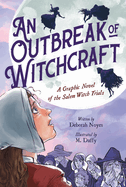
| Publisher: | Little, Brown Ink | |
| Genre: | General, Juvenile Fiction, Historical | |
| ISBN: | 9780759555594 | |
| Pub Date: | June 2024 | |
| Price: | $17.99 |
| Children's & Young Adult |
by Deborah Noyes, illust. by M. Duffy
An Outbreak of Witchcraft is a mostly true graphic novel that explores the Salem Witch Trials, judiciously balancing the accusations, the stories of the accused, and the historical aftermath.
In 1692, two teenage girls levied accusations of witchcraft against a seemingly beloved servant. By the end of 1693, dozens of people had been accused of collaborating with the devil, with 20 innocent people hanged, burned at the stake, and pressed to death for the invisible crime of witchcraft. The Salem Witch Trials raised many questions as to what was real, both from those in the community and folks looking back--so, what actually happened?
In this illuminating middle-grade work of historical fiction, author Deborah Noyes (Lady Icarus) follows real people and "documented facts," but "for reasons of narrative flow and coherence... has taken the occasional literary license with certain details and timelines." Ultimately, Noyes acknowledges, there is no one reason why the Salem Witch Trials started, which may be challenging for some younger readers looking for concrete answers. Charismatic, expressive, full-color illustrations by M. Duffy propel the story and, along with an illustrated dramatis personae at the book's beginning, help differentiate the many similar historical figures. Three interstitials from Noyes explain background information, allowing for nuance and elucidation. Fans of graphic novels like the I Survived series or Ink Girls--and teachers looking for a supplement to their early American education--should enjoy this approachable, slightly fictionalized account of the infamous events. --Nicole Brinkley, bookseller and writer